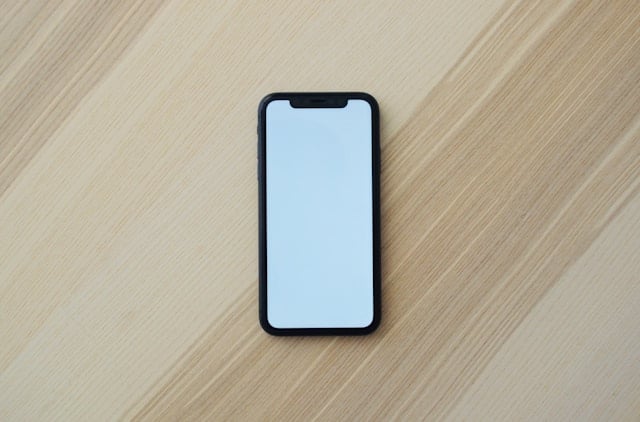
As technology continues to evolve, smartphones have swiftly transitioned from mere communication gadgets to indispensable tools in our everyday lives. One of the most notable functionalities they offer is their ability to serve as GPS devices. However, maximizing the efficiency and accuracy of your smartphone's GPS demands an understanding of best practices. In this article, we will delve into these practices to ensure that your smartphone provides you with reliable navigation every time you hit the road.
Before diving into the best practices, it’s essential to understand the capabilities of your smartphone's GPS. Modern smartphones come equipped with advanced GPS technology, which is integrated with various sensors and connectivity options. This combination allows your device to pinpoint your location with remarkable accuracy.
Cela peut vous intéresser : How to Set Up and Manage Smart Plugs Using Your Smartphone?
The GPS functionality in smartphones uses a combination of satellite signals, Wi-Fi networks, and cellular towers to determine your location. This hybrid approach ensures that your device can provide accurate location data even in challenging environments like urban canyons or areas with weak satellite signals. However, to fully leverage these capabilities, it’s crucial to follow certain practices.
Ensuring that your smartphone receives an optimal GPS signal is paramount for accurate navigation. There are several factors that can affect signal reception, and being aware of them can help you mitigate potential issues.
A voir aussi : What Are the Steps to Configure a Smart Speaker Using Your Smartphone?
One of the simplest yet most effective ways to enhance GPS signal reception is to keep your device in an open area. Tall buildings, dense trees, and even your car's roof can obstruct satellite signals. By placing your smartphone on the dashboard or using a windshield mount, you can reduce obstructions and improve signal strength.
Most smartphones come with different GPS modes, including "High Accuracy," "Battery Saving," and "Device Only." For the best navigation experience, always enable the High Accuracy mode. This mode utilizes a combination of GPS, Wi-Fi, and cellular networks to provide the most precise location data.
Outdated maps and software can lead to inaccuracies and unreliable navigation. Regularly updating your GPS app and smartphone’s operating system ensures that you have access to the latest features and improvements. Many GPS apps also offer offline maps, which can be crucial in areas with limited network coverage.
Using GPS on your smartphone can be a significant drain on your battery. However, there are several strategies you can employ to maximize battery life without compromising on navigation quality.
If you’re navigating in a remote area with limited cellular coverage, consider enabling Airplane Mode while keeping GPS on. This prevents your smartphone from constantly searching for a network signal, thereby conserving battery life. However, be aware that this method will disable all connectivity, including calls and messages.
The screen is one of the biggest power consumers on a smartphone. Dimming the brightness can significantly extend battery life during long trips. Additionally, many GPS apps offer a night mode, which reduces the screen's brightness and minimizes eye strain during nighttime navigation.
Investing in a power bank or a car charger is an excellent way to ensure that your smartphone remains powered throughout your journey. Modern power banks are compact and can provide multiple charges, while car chargers offer the convenience of charging your device while driving.
Accurate GPS data is crucial for effective navigation. There are several practices you can adopt to enhance the accuracy of your smartphone's GPS.
Many smartphones come with built-in compasses, which can influence GPS accuracy. Regularly calibrating your compass can help improve location accuracy. This can be done through your smartphone’s settings or directly within your GPS app.
Magnetic interference from nearby objects can affect GPS accuracy. Avoid placing your smartphone near magnets or magnetic objects, such as magnetic phone mounts or cases. If you use a magnetic mount, ensure that it is designed to minimize interference with your device’s sensors.
Some advanced GPS apps offer augmented reality (AR) features that overlay navigation instructions onto your smartphone's camera view. This can help you understand your surroundings better and make more accurate navigation decisions. While these features can be battery-intensive, they offer an added layer of precision.
The choice of GPS app can significantly impact your navigation experience. There are numerous GPS apps available, each with its unique features and benefits.
An intuitive user interface is essential for a seamless navigation experience. Choose an app that offers a clean design, easy-to-read maps, and clear turn-by-turn instructions. Apps that provide voice-guided navigation can be particularly useful, allowing you to keep your eyes on the road.
Real-time traffic updates are a crucial feature that can help you avoid congestion and reach your destination faster. Choose a GPS app that offers live traffic data and alternative route suggestions. Some apps also provide information on road closures, accidents, and construction work.
Modern GPS apps come with a variety of additional features, such as speed limit alerts, point-of-interest suggestions, and parking assistance. Assess your needs and choose an app that offers the features most relevant to your navigation requirements.
In conclusion, the best practices for using your smartphone as a GPS device involve a combination of optimizing signal reception, managing battery life, enhancing GPS accuracy, and choosing the right app. By keeping your device in an open area, enabling high accuracy mode, regularly updating your maps and software, and employing battery-saving strategies, you can ensure that your smartphone provides reliable and accurate navigation. Additionally, calibrating your compass, avoiding magnetic interference, and leveraging advanced GPS app features can further enhance your navigation experience.
With these practices in mind, you can confidently use your smartphone as a GPS device, transforming it into a powerful tool for all your navigation needs. Whether you’re embarking on a road trip, navigating through a bustling city, or exploring remote locations, your smartphone’s GPS capabilities will guide you every step of the way.